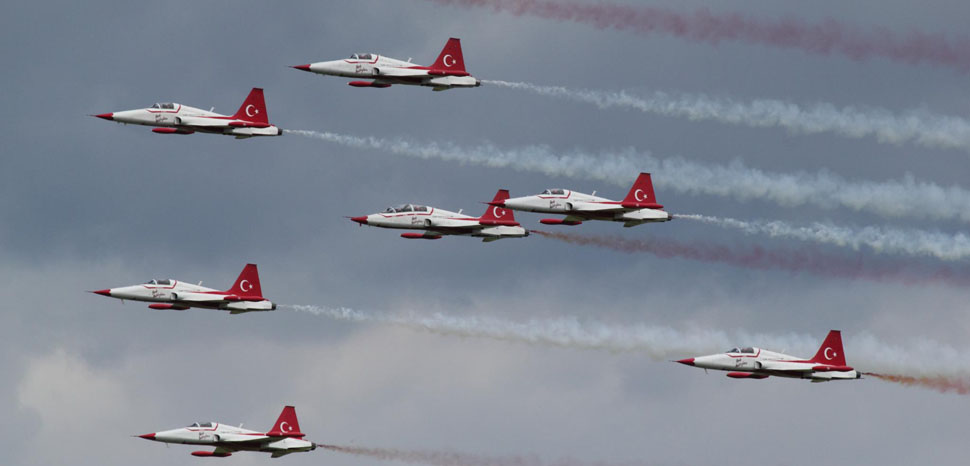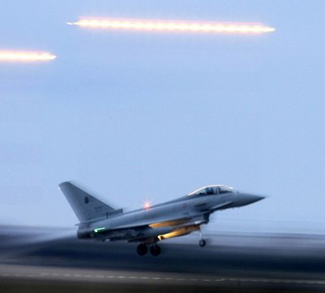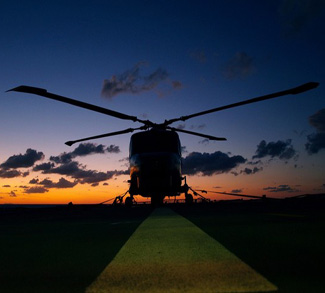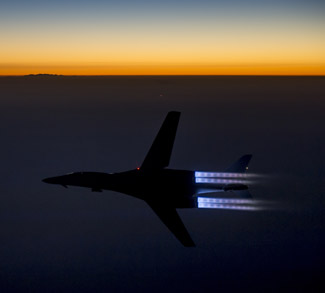There is a famous political expression that goes: “Never let a good crisis go to waste.” Nowhere is this maxim more on display than with Russia’s recent military moves. Despite the hinderances that have come with executing security policy and deploying assets during COVID-19, Moscow, believing it has overcome the worst of the pandemic, has used this opportunity to flex its muscle and remind competitors that Russia remains operational and motivated.
Consider that in late-August, the U.S military intercepted six Russian jets off the Alaskan coast, which underpinned major Russian war games involving air and navy assets in the Bering Sea, simulating among other things numerous practice missile launches. The incident prompted NORAD to increase surveillance and heighten readiness. Elsewhere in the Black Sea region, two Russians planes engaged in dangerous brinkmanship by crossing a B-52 bomber’s nose less than 100 feet away, causing significant afterburner turbulence that endangered the American crew. Footage released by the U.S. military of the Russian Su-27 Flankers captures the irresponsibility of the intercept. In another recent signalling episode, four American military personnel were injured when their patrol vehicle was side-swiped by a Russian military armored vehicle in eastern Syria, raising the spectre of an accidental escalation. If operating across three military theatres was not enough, confrontations between US and Russian space assets in early 2020, along with the curious case of Cosmos 2542 and Cosmos 2543 on USA 245, are not to be overlooked or taken lightly.
Against this backdrop, the upcoming KAVKAZ 2020 exercise slated to take place between September 21- 26 is yet another instance of Moscow attempting to project power and military might. KAVKAZ 2020, meaning Caucasus in Russian, is the culmination of four rotational exercises that began with ZAPAD 2017, with subsequent exercises VOSTOK 2018 and TSENTR 2019 having already taken place. Collectively these exercises are a designed to assess the theatre readiness in each of Russia’s four military districts: Western, Eastern, Central, and Southern. The final edition will involve an estimated 150,000 military personnel as well as 26,000 pieces of military equipment, including 500 tanks and 300 planes, which will be used to conduct military drills across Rostov, Volgograd, Astrakhan, Crimea, Adygea, Chechnya, Dagestan, and South Ossetia. With much international diplomatic attention being heaped on Asia, an underlining feature of the exercise is Moscow’s desire to remind the world of its longstanding influence in Eurasian security. Navy drills being held in the Black Sea, which make up a small component of the overall exercise, have received major Western media attention due to it potential implications to pose as a cover, a la maskirovka technique, for Russian personnel to reactivate tensions and cause mischief in the Kherson and Odessa oblasts as well as the Donbass. When assessing the value of KAVKAZ in domestic terms, the longstanding stubborn threat of radical Islamic terrorism, stemming from the North Caucasus, still represents an existential threat to Moscow and the safety of citizens across the Russian federation.
According to Russian Defence Minister Sergei Shoigu, nine foreign states will be participating, including China, Pakistan, Armenia, Azerbaijan, Iran, Belarus, Turkey, and certain Central Asian states. Personnel from the breakaway provinces in of Abkhazia and South Ossetia in Georgia are also scheduled to participate. While conducting joint training and improving interoperability, KAVKAZ 2020 also represents a high-profile staging ground for participating nations to exhibit their military technology and hardware.
Although the involvement of Turkey, a NATO Ally, would stand out the most from the list of a Russian organized exercise, the decision of India to withdraw is more telling. Although originally confirmed to participate, New Delhi’s tensions with Beijing are no doubt the actual reason, not COVID-19 fears, for India’s withdrawal. The discharge of weapons by both sides along the disputed Himalayan border, the first time this has happened since 1962, led to a meeting between Chinese and Indian foreign ministers in Moscow last week, where both parties agreed to disengage their respective forces. It is notable that Subrahmanyam Jaishankar, Minister of External Affairs for India, is also the former ambassador to China, adding another layer of diplomatic intrigue
While Russia continues to yoke itself to China on many fronts, the idea of India drifting closer within a Western orbit would be hard to stomach for the Kremlin given the cordial ties of the two countries during the Cold War and today. The potential for further diplomatic decoupling with Russia, and a weakening of the BRICS and Shanghai Cooperation Organization (SCO) platforms, could potentially arrive with India looking to firm up its position against China through the revamped Quad format, which includes Australia, Japan, and the United States. Another factor dissuading India from participation would be the possibility of interlocked military training with archrivals Pakistan.
Another intriguing element to keep watchful eyes over is the joint participation of Azerbaijan and Armenia, which in July engaged in an almost month-long series of clashes that risked spiralling into a regional conflict. While Armenia counts itself a member of the Collective Security Treaty Organization (CTSO) and is steeled to Russia for support, on the other side, Azerbaijan benefits from strong ethnic and diplomatic ties to Turkey, somewhat equalizing the military scales. Distrust purveys relations between Yerevan and Baku so no bilateral breakthrough at KAVKAZ to reset relations should be expected.
The final angle to remain aware of is the involvement of Belarus, which remains under heightened international scrutiny amidst the crackdown on protestors who are calling for fresh elections. Now more than ever President Lukashenka needs allies and to show his fidelity to President Putin, who remains in an advantageous position to execute some longstanding requests, most notably the successful execution of the Union State. A face-to-face between President Lukashenka and President Putin took place on 14 September in Sochi that resulted in Russia extending Belarus a €1.25 billion loan. No doubt, the onus to repay the debt will faller sooner than later on the Belarusian President, who could be forced to make military concessions to the Kremlin like the permanent installation of Russian forces and bases on Belarussian territory. In parallel with KAVKAZ, the annual Slavic Brotherhood military drills will take place with Russian and Belarusian servicemen from September 14-25 at the Bretsky training range. Missing from the trilateral drill is Serbia, which has frozen all foreign participation for six months.
Although Russia has made the best of the current crisis abroad and profited from this uncertainty, the Kremlin does not hold a monopoly on this tactic. With so many antagonistic diplomatic moving parts at KAVKAZ, keeping order for the duration of the exercise as well as at subsequent multinational platforms will require all of Moscow’s best efforts if they are to keep this string of foreign policy wins going.




